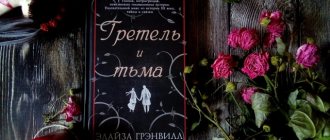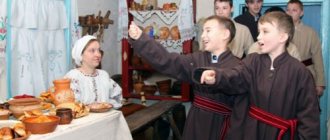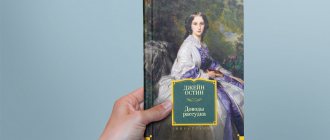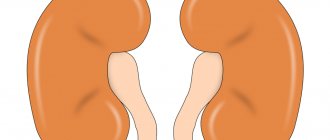Home / Allergic diseases
Application, recipes and medicinal properties of elderberry.
For the purpose of elderberry treatment, berries (fruits), leaves, and bark are used.
PRECAUTIONARY MEASURES.
BLACK ELDERBIRD. Important! Elderberry stem
contains cyanide and may be toxic!
The flowers
are collected when the plant is in bloom,
the bark
is collected in the summer, and
the fruits
are collected in the fall.
ELDERBERRY PREPARATION.
The flowers
are cut with a knife, placed in baskets and quickly dried under a canopy and in the attic, or laid out in one layer on paper or fabric.
When the branches of elderberry inflorescences
begin to break, drying is complete.
Raw materials should be stored in tightly sealed glass jars for 3 years. Fruits
harvested at the time of full ripening. They must be dried in an open place and dried in dryers at a temperature of no more than 65°C. Store this raw material in linen bags in a ventilated room, drying it periodically to prevent it from becoming moldy.
Elder. Benefit and harm. Video
FOLK RECIPES. ELDERBERRY, ELDERBERRY TREATMENT
INDICATIONS FOR USE OF ELDER BERRY.
A decoction of the whole plant (flowers and leaves, root) is used as a means of regulating metabolism.
Fresh berries and a decoction of flowers are used for
...
are made
from
black elderberry (berries) .
It is better to prepare
jam and jelly without sugar
,
using honey
or
molasses.
If you sprinkle
elderberry apples with flowers
, they retain their aroma for a long time.
An infusion of
dried elderberry berries
(ratio - 1:10) improves
bile secretion, increases diuresis, which helps the movement of intestinal contents.
Infusion or tea or from elderberry flowers
prescribed for
, , , ,
as an
anti-inflammatory
- for
rinsing the mouth and kidneys, gout and rheumatism.
Young elderberry leaves boiled in honey are used as a laxative for CHRONIC CONSTIPATION, and a decoction of the roots is drunk for DIABETES MELLITUS.
In ancient times, plant leaves boiled in milk were applied to
, nodes and . prepare an infusion of black elderberry flowers:
one tablespoon tbsp. crushed dry raw materials, pour a glass of boiling water and leave for twenty minutes, then strain and take two tablespoons of tbsp. hot 5 - 6 times a day for twenty minutes. before eating.
An infusion of flowers is also prepared and used.
for
tracheitis, chronic respiratory diseases with
dry cough.
ELDERBORN, TREATMENT WITH ELDERBORN
, when gargling, use elderberry infusion of flowers.
You can also use 2 tbsp internally. spoons a quarter of an hour before meals.
Laryngitis
- and
a golden mustache. boiled water
Siberian elderberry for colds.
dried flowers
with boiling water (one glass), leave for 1/3 hour, strain.
the infusion
¼ cup (preferably with
honey
) three to four times a day fifteen minutes before meals for
colds.
RECIPE FOR COLLECTION WITH ELDERBERRY FOR COLDS (ARVI).
Elderberry flowers
- two parts,
linden blossom
- two parts,
peony flowers
- one part,
root
- one part,
willow bark
- three parts,
chamomile flowers
- one part. A couple of tablespoons of the crushed collection are brewed with half a liter of boiling water, leave for fifteen minutes, and strain. Drink the infusion warm throughout the day.
ANTI-COLD COLLECTION FOR COLDS.
Elderberry flowers
- one part,
tricolor grass
- two parts,
fruits
- one part, - one part,
linden blossom
- two parts.
Infuse a tablespoon of the crushed collection in cold water (1 glass) for a while. two hours, boil for five minutes, after cooling, drain. The resulting decoction is taken warm several times during the day - for chronic tracheobronchitis
.
HERB DECOTION FOR COUGH.
Elder flowers
,
sundew grass, leaf, tricolor violet grass
(in equal parts).
Infuse four teaspoons of crushed tea in a glass of water at room temperature for a couple of hours, boil for seven minutes, and after cooling, drain. Drink the resulting decoction one day in several doses for cough
,
bronchial asthma, bronchiectasis
.
HERBAL COLLECTION FOR COUGH.
Elder flowers, celandine grass, cinquefoil grass, horehound grass, pine buds
(equal amounts of all). Methods of preparation and use as in the recipe above.
ANOTHER HERBAL COLLECTION FOR COUGH.
Elder flowers
- one part,
fruits
- two parts, - one part, - one part,
anise fruits
- two parts.
Methods of application and preparation are the same as indicated above.
ELDERBORN IN THE TREATMENT OF PNEUMONIA.
4 large
umbrellas of elderberry flowers
with liters
of vodka
and leave for 14 days. Take a tablespoon per 60 minutes. before meals three times a day. Don't skip appointments. One course of treatment will require 0.5 bottles of infusion.
TRADITIONAL MEDICINE FOR COLDS (ARVI) RECOMMENDS:
FOR COLD DISEASES (ARI, ARI), to maximize sweating, use MEDICINAL PLANT COLLECTIONS: use a decoction of elderberry flowers: a tablespoon of flowers
boil for twenty minutes. in the volume of a glass of water, decant, bring the volume to the original - with boiling water. Take hot, two tablespoons 5 - 6 times a day 1/4 hour before meals.
ELDERBORN FOR DIABETES.
useful :
a spoonful of tbsp. crushed dry raw materials are boiled in one tbsp. water in a water bath for 30 minutes, then ten minutes, cool, strain and bring to the original volume with boiling water. Take a third of a tbsp. three times a day.
ELDERBORN.
The following decoction of elderberry flowers is recommended
:
boil a tablespoon of dry raw material in one tbsp.
water for fifteen minutes, cool for forty-five minutes, decant, squeezing and bringing the volume to the original volume with boiling water. Take one third to half a glass warm two to three times a day before meals. is also made and used for articular rheumatism.
RECIPE FOR TREATING LARINGITIS WITH BLACK ELDERBERRY.
Laryngitis
is
the process of inflammation of the laryngeal mucosa.
It is treated as follows.
Required according to Art. Use a spoon to collect black elderberry flowers, coltsfoot leaves
and
golden mustache.
Mix the resulting mixture, take a tablespoon of the mixture and add tbsp.
hot boiled water
.
Leave for one third of an hour. Then pass through a strainer or gauze and use when rinsing. Use until cured five times a day, change the solution to a fresh one every day. PRECAUTIONS WHEN USING ELDERBERRY = Attention!
Do not use
elderberry preparations during pregnancy or for those suffering from chronic gastrointestinal diseases!
Be healthy!
Elderberry, treatment with elderberry. Video
Elderberry is a perennial plant with black-purple fruits that ripens in late summer - early autumn. This is a medicinal plant with numerous beneficial properties. For medicinal purposes, not only the fruits of the plant are used, but also its leaves, flowers, and, less commonly, bark and branches.
The calorie content of elderberry is only 73 kcal, which can have a positive effect on weight loss. To get rid of excess weight, you should add the product to different dishes, prepare special decoctions and infusions.
It is necessary to distinguish between the main types of elderberry, because black elderberry is used for medicinal purposes, and red elderberry is poisonous and dangerous to human health. If you are going to use the flowers of a plant, you need to carefully collect them and follow certain storage rules.
Black elderberry description, photo
Black elderberry (sambuca) is widespread in the wild. It grows on forest edges and river terraces. Found everywhere in Europe, North America, North Africa, Asia Minor, Transcaucasia, southern Siberia. It is used as a garden plant for landscaping summer cottages and front gardens.
Elderberry belongs to the honeysuckle family. Botanists identify about 40 varieties of this species. The black elderberry is a spreading bush or tree. The height of the trunk varies depending on the growing conditions: 3–10 meters. On young shoots the bark is ash-brown; with age it darkens and becomes gray-brown. The wood is fragile and brittle. The inner part has the appearance of a soft, porous white core.
The elongated leaf blade is attached to the branch by a long petiole. The upper side of the leaf is dark green, the lower side is light green. Length 20–30 cm.
During the flowering season (May - June), the crown of the bush is decorated with huge umbrella inflorescences. They are collected from small white or cream-colored flowers. Flowers do not contain nectar and are therefore unattractive to insects. They emit a fragrant aroma. The inflorescences are erect and directed upward. As the berries ripen (July - September), the umbrellas are lowered.
The fruit is a drupe. Inside the juicy sweet and sour pulp there are 3-4 seeds. Externally, the fruits resemble small (5–7 mm) round black berries. Based on the color of the fruit, the plant received its specific name - black elderberry.
Attention! The red elderberry with scarlet fruits is very similar to its relative. Its berries are poisonous!
Sambuca is easy to care for and has found wide practical applications. It is cultivated for collecting berries and other important vegetative parts.
And now - attention! Misconceptions about black elderberry
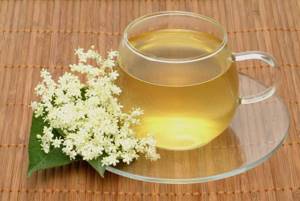
Until now, many are mistaken; they considered this plant to be poisonous. Out of ignorance, people confuse the herbaceous and red elderberry with such a healing miracle. like black elderberry. The grassy and red ones are poisonous, but the black ones are not.
Many people are confused by the strange smell of young elderberry shoots, and they often write that animals avoid this plant and many are sure that this is a sign that the plant is poisonous. But black elderberry is safe.
The main thing is not to confuse it with a herbaceous elderberry and, especially, with a red elderberry - red elderberry is very dangerous!

PREPARATION RECIPES HERE: CLICK ON THE PICTURE

What are the benefits of black elderberry?
The beneficial properties of sambuca were noticed by people back in ancient times. The bush with small black berries was treated with respect. He was greeted as a respected man and his hat was removed in recognition of his many merits. Elderberry fruits were especially reverent. They were nicknamed “the eye of the devil” for their shiny black color. In the Middle Ages, people believed that witches used this plant for their healing.
People used black elderberry for household needs. The juice of the fruit served to dye the bleached fabric, giving it a dark purple color. The inflorescences were laid out indoors to protect them from harmful insects (fleas, bedbugs).
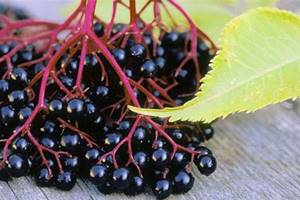
Ripe fruits were wrapped in leaves and their shelf life was increased. Substances contained in the leaves prevented the appearance of rot.
The effectiveness of sambuca products was highly appreciated by cosmetologists. Wipe the skin with lotion made from flowers. It takes on a smooth, elastic appearance. Washing with a flower decoction has a whitening effect on the skin, reducing the number of freckles and age spots. Grinded berries are applied to the face as a mask to get rid of acne.
Cooking lovers have paid attention to the juicy elderberry fruits. They are used to prepare numerous dishes: preserves, jams, mousses, drinks. The filling with the addition of ripe berries gives the finished product an almond aroma.
Properties of elderberry juice
Black elderberry juice has an astringent, diuretic, tonic and mild antiseptic effect. It is used in folk medicine as a remedy for colds, sore throats, dry coughs and flu. It is an antipyretic, diaphoretic, immunostimulating, expectorant. Helps cure kidney diseases, furunculosis, arthritis, diabetes, gout, rheumatism. Acts as a painkiller and helps with nervous diseases.
Elderberry fruits have a laxative and diuretic effect; therefore, elderberry juice is used for healing and health-improving diets, during fasting days. Elderberry juice is recommended for use during inflammatory diseases of the liver, intestines and stomach. An infusion of its fruits with sugar is also suitable for such purposes. The procedure for consuming them accelerates the process of tissue healing due to the content of iodine, mineral salt and vitamins A and C in elderberry.
Chemical composition
The chemical composition of sambuca is rich in content. It contains:
- carbohydrates;
- steroids;
- acids;
- essential oils;
- iroids;
- steroids;
- anthocyanins;
- triglycerides;
- triterpenoids.
The most useful substances include ascorbic acid, carotene, and choline.
Attention! Amygdalin is potentially dangerous. It is capable of forming poisonous hydrocyanic acid during cleavage.
Possible harm of elderberry
Speaking about elderberry in tea, the benefits and harms of the plant, one cannot fail to note the following: fresh elderberry fruits contain amygdalin. This is a dangerous substance that under certain circumstances can transform into hydrocyanic acid. This will cause terrible poisoning. Therefore, the berries are not consumed without heat treatment.
- Elderberry is contraindicated for pregnant women, children and nursing mothers.
- People who suffer from ulcerative colitis should avoid taking elderberry in any form.
- Any products with elderberry are prohibited without consulting a doctor.
Medicinal properties of the plant
Black elderberry can have both a complex therapeutic effect on the body and a limited therapeutic effect. Individual parts of the plant have distinctive properties:
- Leaves as a laxative.
- Bark as a diuretic.
- Berries are used as a diaphoretic and laxative.
- Flowers as an anti-inflammatory, diaphoretic, anti-fever remedy.
Medicinal properties of fruits (berries)
Sambuca berries have a complex of therapeutic properties. The high content of ascorbic acid helps strengthen the body and helps fight inflammatory processes. The vitamin C reserves concentrated in the fruits make black elderberry a powerful remedy for fighting viral infections.
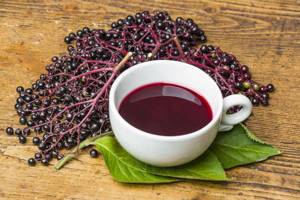
The juice is used to heal wounds, lower blood sugar levels, and restore liver cells. Sambuca fruits have a mild laxative effect. Their use stabilizes intestinal motility.
Ophthalmologists appreciated the ability of berry juice to strengthen the blood vessels of the visual organs and relieve eye fatigue.
Application of plant leaves
The young leaves of the bush have analgesic and calming properties. Experts in the field of homeopathy recommend resorting to them in case of colds, chronic insomnia, and frequent migraines.
Carotene and vitamin C found in the green leaves of the tree have a healing effect. With their help, diaper rash, burns, and boils are treated.
Medicinal properties of flowers
Tea brewed from sambuca flowers relieves inflammation and destroys harmful bacteria. It is drunk or used to rinse the mouth and throat. The decoction has proven itself in the treatment of bronchitis, flu, sore throat, as well as dental diseases.
Acetic and malic acid help normalize the metabolism in the body.
Important! Regular use of herbal remedies from flowers leads to weight loss.
Microelements present in floral raw materials have an antifever effect. This effect is used to alleviate the well-being of malaria patients.
Elderberry: beneficial properties
The beneficial properties of elderberry are not surprising if you know the composition of this plant, its inflorescences and fruits. The inflorescences of the plant contain:
- useful organic acids: malic, acetic, valeric, etc.;
- essential oil;
- tannins.
The fruits of the plant contain:
- ascorbic acid;
- vitamin C;
- fructose, glucose;
- amino acids;
Elderberry leaves include:
- carotene;
- vitamin C;
- resinous substances, etc.
In addition, the bark of the plant, juice from the berries and fresh flowers are used for medicinal purposes. The unique composition of elderberry means that regular consumption of this product will allow you to improve your health.
What are the benefits of elderberry?
- Used as a strong diuretic.
- Fresh berries effectively help with rheumatism and neuralgia.
- Elderberry flowers have antibacterial properties.
- Elderberry is recommended to be added to food for respiratory diseases, as well as for colds.
Is elderberry good for weight loss? The answer is clear: yes, because this product has diuretic properties and removes all excess fluid from the body, and the low calorie content of elderberry speaks for itself.
Black elderberry for cancer
Important! Official medicine does not recognize the therapeutic effects of sambuca in the treatment of cancer.
Doctors practicing homeopathy have a different attitude. They take into account the presence of amygdalin in the plant. When it interacts with the enzyme beta glucosidase, hydrocyanic acid is produced. It destroys cancer cells and does not affect healthy tissue.
All parts of the plant are used for medicinal purposes. The main role is given to elderberry extract, which is used at all stages of the fight against the disease.
Berry extract
Sambuca fruits are placed in a glass container, alternating them with layers of sugar in equal proportions. The vessel becomes clogged. The contents are infused for a month. The finished extract is filtered and consumed 1 tablespoon after meals. Application period 1.5 months. Then a month of rest and a repeat course. The treatment procedure is designed for 3 sessions. To prevent cancer, one session once a year is enough.
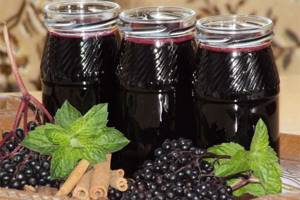
Herbal remedies made from sambuca help alleviate the condition of patients after chemotherapy sessions.
Sambuca pureed with sugar
- 0.5 kg of berries;
- 1.5 kg of sugar.
The fruits are ground with sugar. The finished product is stored in a closed glass container in a cool place. Used for stomach cancer.
Home Recipes
To prepare wine, you need to pour black elderberry juice into a three-liter glass bottle and add a glass of sugar.
If the wine is intended for diabetics
(table of what not to eat if you have diabetes), then replace the sugar with the same amount of honey.
The container must be sealed tightly. Install a water seal. Leave in a dark place for fermentation.
Pour the finished wine into bottles that should be stored horizontally.
For medicinal purposes, drink 30-50 grams of wine before meals. Please note that even in such doses a laxative effect is possible.
It's easy to make black elderberry jam. A kilogram of sugar is needed per kilogram of fruit.
The berries are sprinkled with sugar in layers and left for a day.
After settling and releasing the juice, you need to bring the mass to a boil and distribute it into sterilized jars, sealing them hermetically.
To prepare elderberry honey, grind the fresh flowers of the plant to the consistency of sour cream, pour in honey (linden, fireweed or other) in a 1:1 ratio.
Leave the glass container with the resulting mixture in the refrigerator. Use as needed for colds, coughs, flu, sore throats.
Collect black elderberry flowers from environmentally friendly areas.
The best option is forests or abandoned villages.
It should not rain in the collection areas during the last few days to keep the flowers dry. After collecting, do not wash or rinse them, otherwise the honey will ferment and spoil.
For malignant tumors
This extract is used to treat cancer in Bulgaria.
The healers give a 100% guarantee
that cancer will be cured both before and after surgery.
It is impossible to say for sure about the effectiveness of the product, but it’s worth a try.
You need to collect black elderberry berries and place them in a glass container.
Cover a finger-thick layer with the same layer of sugar, and so on until the top of the container.
- The product should infuse for 20-30 days.
- The extract is filtered.
- Take a tablespoon three times a day after meals.
And 10 minutes before a meal you need to drink 150 ml of purified water.
Treatment is underway
course of 1.5 months.
After a month has passed, repeat the course. Treatment requires three sessions. For prevention, one therapy once a year is sufficient.
Healing folk recipes
Berry syrup
- 1 kg of berries;
- 2 glasses of water;
- 1 kg sugar.
The fruits are poured with water and boiled for 20 minutes. The broth is filtered. Add sugar to the juice and bring to a boil. The finished syrup is poured into glass jars and bottles. Store in a cool place. Used for respiratory diseases
Black elderberry bark and roots beneficial properties
The bark of the plant is a strong diuretic. A decoction of it is prescribed to reduce swelling. A brewed mixture of bark and leaves is used as a laxative. It is also drunk for stomach diseases and atherosclerosis. Powder from ground bark diluted in a bath relieves pain from rheumatism and gout.
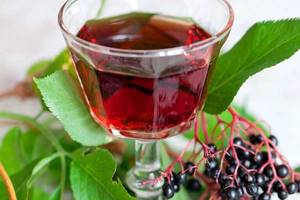
For people suffering from insomnia and headaches, a warm bath with the addition of sambuca root powder is beneficial. It has a calming effect.
Elderberry and weight loss
Elderberries include many vitamins and microelements that help restore a normal digestive system. There are also plant hormones that have a beneficial effect on endocrine processes in the body, which stimulates metabolism.
Elderberry is used fresh for weight loss; you can also make tea with the addition of delicious fruits, or make an infusion or decoction from the branches of the plant.
How to lose weight with elderberry?
- Prepare a decoction of the branches and roots of the plant. Use this decoction carefully, in small quantities.
- Drink juice from fresh elderberries. It has diuretic properties and removes excess fluid from the body.
- Eat fresh berries, several times a day, but in small quantities. Fruits have a positive effect on the body's metabolic processes. Thus, you will digest food faster, thanks to which you will actively lose extra pounds.
You can lose weight by 6-8 kg in 2 weeks with the help of elderberry. If this result does not seem very effective to you, it is worth noting that it will be persistent and reliable. In the future, you will learn to eat properly and observe moderation in all foods. From time to time it is recommended to carry out fasting days, during which you can drink low-fat kefir and eat fresh elderberries.
Recipes for preparing elderberry decoctions and infusions
Infusion of leaves for the treatment of hemorrhoids
- 8 sambuca leaves;
- 1 tbsp. bed of sage;
- 1 glass of water;
- 1 teaspoon honey.
Prepare a mixture of dry sage and elderberry leaves. The mixture is poured with boiling water and left for 1 hour. Honey is added to the finished infusion. Take 0.5 cups orally 1 time per day. Course duration is 1 month.
Berry infusion
- 10 grams of dry berries;
- 1 tbsp. boiled water.
Dry fruits are infused in warm boiled water for 2 hours. The finished infusion is filtered. Use as a laxative, 1 serving per day.
Decoction of bark and leaves
- 30 grams of vegetable mixture;
- 1 liter of water.
Crushed dried branches and sambuca bark are mixed in a 1:1 ratio. Pour boiling water over the mixture. Cook over low heat for 5 minutes. The decoction is infused for 40 minutes. and filtered. Used as a diuretic.
Flower infusion
- 5–15 grams of dried flowers;
- 1 glass of water.
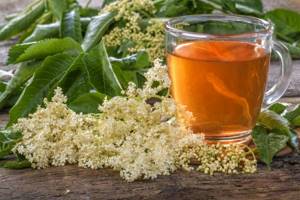
Flowers are brewed with hot water. The infusion sits for 20 minutes. Once prepared, it is stored in the refrigerator. Take 0.5 cups hot 3 times a day before meals. For tuberculosis.
Elderberry - composition and calorie content
The energy value of a 100-gram serving of black fruits is 73 kcal. The amount of ballast substances is 7 g.
Macronutrients:
- water - 79.8 g;
- carbohydrates - 18.4 g;
- fats - 0.5 g;
- proteins - 0.66 g.
Vitamins:
- C - 36 mg;
- B1 - 70 mcg;
- B2 - 60 mcg;
- B3 - 0.5 mg;
- B5 - 0.14 mg;
- B6 - 0.23 mg;
- folic acid - 6 mcg;
- A - 30 mcg.
Minerals:
- potassium - 0.28 g;
- magnesium - 5 mg;
- zinc - 0.11 mg;
- iron - 1.6 mg;
- copper - 61 mcg;
- calcium - 38 mg;
- selenium - 0.6 mcg;
- phosphorus - 39 mg;
- sodium - 6 mg.
Fatty acid:
- saturated - 23 mg;
- simple unsaturated – 80 mg;
- polyunsaturated - 0.25 g.
Contraindications for use
Attention! Black elderberry berries are not recommended to be consumed in large quantities. In case of overdose, side effects occur - nausea and vomiting. Sambuca fruits are eaten only after heat treatment. In their raw form they are inedible.
Some people may have an allergic reaction to components contained in various parts of sambuca. People with diabetes should be careful when consuming elderberries. They are more likely to develop hypoglycemia. The fruits have diuretic properties, so they cannot be combined with other similar drugs. The body may be at risk of dehydration.
Herbal remedies made from sambuca are strictly contraindicated for persons diagnosed with Crohn's disease, ulcerative colitis, or chronic gastrointestinal diseases. Elderberry and its derivatives are not allowed in the diet of pregnant and lactating women and children under 12 years of age.
Elderberry: contraindications
Why is elderberry harmful if it contains so many beneficial substances and helps with various diseases? First of all, it is a slightly toxic plant, so its consumption should be limited during pregnancy and lactation.
Abuse of the product can cause nausea, vomiting and even poisoning. Always use moderation when consuming berries, elderberry-based decoction or infusion.
Contraindications for elderberry are as follows:
- It should not be consumed by people who suffer from inflammatory diseases.
- It is worth reducing the dosage for people suffering from diabetes.
- Contraindicated in ulcerative colitis.
The harm from elderberry, even if there is any, is not too dangerous for human health, and if you consume the product in moderation, you should only expect a positive result in treatment or prevention of your own health.
Collection and storage rules
Each part of the tree has its own harvesting period. The bark is removed in early spring. Branches are considered suitable for harvesting only at the age of 2 years. The thin top layer of gray color is carefully removed from them.
The main part of the bark is separated from the porous core. Heat treatment is carried out in a drying chamber or oven at a temperature of +65 +70°C. The roots are dug out of the soil in late autumn. After drying, they are ground into powder. It can be stored for up to 5 years.
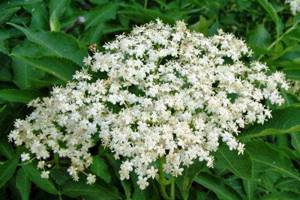
The inflorescences are cut off whole. Dry in the shade. Flowers are picked from dry umbrellas and packed in paper bags. There is another way to prepare flowers, in which they are immediately separated from the peduncle. They undergo heat treatment in special dryers at a temperature of +30-35°C.
Ripe bunches of berries are picked off entirely to avoid damage to the fruit. They are prepared in 2 stages:
- Drying in bunches in the fresh air.
- Drying in a stove or oven at a temperature of +60-65°C. Supplies are stored in dry, cool rooms. For storage use paper packaging or fabric bags. Periodically, raw materials are checked for the presence of mold.
Important! The medicinal properties of flowers, leaves, and bark are preserved for 2–3 years. Fruits and products made from them have the ability to have a therapeutic effect on the body for six months after harvesting.
Conclusion
The medicinal properties of black elderberry are skillfully used in folk medicine. They help fight a wide range of diseases and help restore vital functions of the body.
Black elderberry (tree-like) - description, collection, composition, properties, recipes, contraindications.
———
BLACK ELDERBERRY (tree-like) - is a medium-sized shrub or, one might say, a not too large tree, reaching a height of up to 6 meters. The crown is rounded, the bark of the trunk is light brown, which over time becomes covered with small cracks. Fast-growing bushes are highly branched and can grow up to 300 cm in diameter. They propagate vegetatively, by basal suckers and seeds. The leaves are large, up to 25-30 cm long. Leaflets in the amount of 5 to 9 pieces sit on very short petioles opposite, Leaf blades in the upper part are dark green, lighter below, marginal flowers are sessile, the rest are on pedicels Shape They are ovoid-oblong, sharply tapering towards the sharp tip, with small jagged edges. If you rub the leaf in your hands, it will release juice with an unpleasant odor. Yellow or slightly beige small flowers form a flat corymbose raceme, about 15-20 centimeters in diameter. The flowers of the plant have a pleasant sweetish smell. Elderberry blooms for a long time - from May to July. The fruit of the plant is a dark purple drupe berry, with dark red flesh and seeds inside. After the leaves fall, the berries continue to hang on the branches and become good food for birds. In folk medicine, black elderberry is used: blossoming flowers of the plant, leaves, grains, berries, young branches, bark and even roots.
Elder flowers are collected during the period of full bloom before the corollas begin to shed. Harvesting the flowers of the plant can last 20–25 days. After harvesting, it is necessary to separate the flowers from the peduncles. Dry the raw materials in the shade under a canopy or in attics with good ventilation, spread them out in a thin layer on a clean surface, finish drying when the inflorescence branches become brittle. It can also be dried in dryers at a temperature of no more than 35–40°C. After drying is completed, the prepared raw materials are beaten or rubbed through a sieve. Dried raw materials with a spicy smell and sweet taste are stored for 2 years in a dry place. The fruits must be collected fully ripe, unripe fruits are poisonous, and ripe ones are absolutely safe and edible; they are collected in late August–September. Elderberry fruits are cut completely in whole clusters, laid out in a thin layer, air-dried, and then dried in dryers , stoves, ovens, at a temperature of 60–65°C. Dried fruits must be separated from the branches. Dried fruits become rounded and elongated, with a sour-sweet taste. Shelf life 6 months. The roots of black elderberry need to be dug up in late autumn. They are dried, in dryers or in a draft, and ground into powder. Shelf life: no more than 5 years The bark of this plant is harvested in early spring before sap flow, from two-year-old branches, separated from the core, the top layer is removed and dried in dryers, ovens, ovens at a temperature of 65–70°C. Shelf life 3 years. Fruits and flowers should be stored in paper boxes, canvas bags, cotton bales, in a dry, cool, well-ventilated area. The raw material does not tolerate dampness, quickly absorbs moisture, becomes moldy, and loses its medicinal qualities.
Black elderberry is often confused with red elderberry, although they are completely different in appearance. The red roseberry has an ovoid raceme that does not fall down after flowering. The flowers of the red elderberry are green, in contrast to the black elderberry, in which they are yellow. The berries of the black heath are purple, but the red ones are a rich red color.
Chemical composition of black elderberry:
| Black elderberry has the following medicinal properties:
|
♦ Black elderberry flowers contain a large amount of glycosides and essential oils, organic acids, sugar, as well as vitamin C and tannin. The leaves of the plant contain vitamin C and carotene. Black elderberry bark contains essential oils, choline and phytosterols. The fruits contain tannins, amino acids and carotenoids.
♦ The fruits and flowers of black elderberry are included in diuretic, lactogenic, gastric preparations and in preparations for the treatment of chronic pancreatitis. Elderberry is also recommended for internal use by women who have had cancer.
♦ It should be mentioned that the plant also has an antihypoxic effect on tissues and organs. Black elderberry also has an anti-edematous effect on the body due to the presence of phenol carbonic acids.
♦ For colds, it is recommended to use black elderberry as an antipyretic, diaphoretic, expectorant and anti-inflammatory. Taking medicinal products from elderberry roots normalizes blood sugar levels.
♦ I would like to note that the fruits of this plant help remove salts of heavy metals and radionuclides, elderberry flowers treat burns and diaper rash, ulcers and small cuts.
♦ The healing properties of black elderberry are recognized even by specialists in modern medicine and are worthy of the attention of everyone who wants to maintain their health through natural means.
In folk medicine, black elderberry is widely used. Infusion, decoction, juice, poultices, baths from raw black elderberry are used internally and externally for diseases such as:
- For diseases of the kidneys and bladder;
- With ascites (dropsy);
- For respiratory diseases;
- For edema of various origins;
- For women's diseases, menopause;
- For flu and acute respiratory infections, headaches
- For gastric ulcers
- For diabetes mellitus;
- For rheumatism, polyarthritis, gout. arthritis;
- For hepatitis;
- For hemorrhoids;
- For skin cancer, stomach cancer and other oncological diseases;
- For inflammatory diseases of the mouth and throat;
- For gastric ulcers
- For neuralgia, radiculitis, sciatica;
◊ Before you start treating any disease with folk remedies, you need to consult a doctor. If used carelessly, it can seriously undermine your health.
INfusion: pour one tablespoon of flowers with a glass of boiling water, leave for 20 minutes in a sealed container, then strain. Drink hot as a diaphoretic at night or take 1/2 glass 3-4 times a day 15 minutes before meals as an expectorant, astringent, anti-inflammatory.
BREW: 1 tablespoon of plant flowers is placed in an enamel or non-rusting bowl, poured with a glass of hot water, covered with a lid and heated in a water bath for 15 minutes, then cooled for 45 minutes at room temperature, filtered. The cooled raw materials are squeezed out. The volume of the resulting infusion is brought to a glass with boiled water. The finished infusion is stored in a cool place for no more than 2 days. Take warm, 1/3–1/2 cup 2–3 times a day, as a diuretic for colds.
INfusion: teaspoons of flowers are poured into a glass of boiling water, left for 20 minutes, then filtered. You should not drink in large sips throughout the day. This infusion is used as a diaphoretic, diuretic and emollient for colds (cough, sore throat, runny nose, laryngitis), as well as for kidney disease, bladder, hemorrhoids, gout, swelling, skin rashes.
INfusion: 2 tablespoons of crushed dried flowers are poured into one glass of boiling water, left for 20 minutes, then filtered, stored in the refrigerator. Drink half a glass 3-4 times a day, hot, 15 minutes before meals for colds and tuberculosis.
INfusion: 0.5 cups of fresh or dried flowers of the plant, pour 0.5 liters of boiling water and leave for 20 minutes. This infusion is used for wiping and washing the skin.
INfusion: in a thermos of 0.5 liters of boiling water, infuse one tablespoon of elderberry bark, or one teaspoon of elderberry powder for 6-8 hours. Then filter. Take half a glass 5-6 times a day for edema (especially for renal edema), and for inflammatory kidney diseases.
INSTRUCTION: Infuse 1 teaspoon of dried elderberry fruits in a glass of chilled boiled water for 2 hours, then filter. You need to drink half a glass once a day for constipation. INSTRUCTION: 1 teaspoon of dry fruits is poured into two glasses of hot water, left for 6-8 hours (can be in a thermos), then filtered. Use as a diuretic for colds.
INfusion: 0.5 teaspoon of dried berries per 150 ml of chilled boiled water, leave for 12 hours, strain, take warm once a day as a mild laxative.
Infusion: 1 tablespoon of dried elderberries is poured with a glass of boiling water, left for 20 minutes, taken 50 ml 3-4 times a day after meals for diabetes.
INSTRUCTION: 1 tablespoon of dry crushed leaves is poured with two glasses of boiling water, left for 6-8 hours (can be in a thermos). Drink warm. Take as a diuretic for colds.
BREW: 1 tablespoon of leaves, pour 200 mg of boiling water, boil for 5 minutes, leave until cool. Then strain. Take 1 tablespoon 3 times a day before meals for diabetes, edema of various origins, rheumatism, gout, ascites (dropsy). Add 1 tablespoon of honey to the decoction of leaves and take it for stomach colic.
BREW: 1 tbsp. Mix a spoonful of crushed bark with one spoonful of young elderberry shoots. Brew 1 liter of boiling water, put on low heat and boil for 5 minutes, leave for 40 minutes. Then strain. Use this decoction for diabetes, and also as a diuretic for edema of various origins.
BREW: 2 tablespoons of black elderberry, brew 1 liter of boiling water, put on low heat and boil for 5-10 minutes, leave for one hour. Then strain. Use for diabetes and neoplasms.
BREW: Boil 2 tablespoons of chopped black elderberry roots for 30 minutes in 0.5 liters of water. Use warm for douching for colpitis , cervicitis and other inflammatory diseases of the female genital organs . Treatment should begin 2–3 days after menstruation. Take a break 2-3 days before the onset of menstruation and so on until complete recovery.
BREW: 2 tablespoons of crushed black elderberry roots, brew 1 liter of boiling water, put on low heat and boil for 5 minutes, leave for 40 minutes. Then strain. Use for diabetes, kidney disease, and also as a diuretic for edema of various origins.
JUICE: squeezed from ripened fruits or flowers. It is taken for rheumatism and as a pain reliever, in particular for nerve pain in the face. Fruit juice is taken three times a day, half a glass with a spoon of honey. The juice of the flowers is mixed with honey in equal parts and taken 1 tablespoon 3 times a day 30 minutes before meals.
BATHS: dry leaves and ground roots are poured into 1 liter of boiling water (30:1000), left for 2 hours. The infusion is filtered and poured into a bath (36–37°C). The course of treatment is 10–12 days. It is recommended to take a bath for 15 minutes before bedtime. Indications: rheumatism, gout, obesity.
BATHS: 2 tablespoons of the prepared mixture of (dried leaves, flowers, elderberry root) pour one liter of boiling water, leave for 2 hours. Then strain and pour into the bath (water temperature should be 35 -37°C). You need to take a bath within two weeks. Taking a bath has a disinfecting effect. After a two-month break, repeat the course. To enhance the effect, it is advisable to drink 30 ml of elderberry tincture 15 minutes after the bath. A bath of bark, branches and roots is used for rheumatism and polyarthritis.
Currently, elderberry has gone beyond folk remedies; it is recognized by official medicine as a valuable medicine. Scientists attribute the medicinal power of the fruit to the high content of useful, medicinal substances and elements in the plant.
The consumption of elderberry should be limited or eliminated if there is an individual intolerance to the drug. Not recommended during pregnancy; consult a doctor! Treat children under 12 years of age with caution. Observe the dosage; in case of overdose, nausea and vomiting are possible. It should be borne in mind that elderberry preparations have a diuretic and laxative effect and should be excluded in case of ulcerative enterocolitis, diabetes insipidus, and renal failure.
—————
What does elderberry look like and where does it grow?
Elderberry is a plant that is a common shrub or small tree with clusters of small black berries. The height of the bush usually reaches 5 - 10 meters. The leaves of the plant are small, lanceolate, with 3-5 leaves on each branch. Their color is yellowish or greenish. Flowering occurs in May or June.
Black and red berries are most often found in nature. The flesh of the plant is reddish. One fruit contains 3-5 small seeds. It takes about a month to fully ripen (from late summer to mid-autumn). Due to the rather unpleasant odor, the berries of the plant remain untouched by animals.
The plant is common in subtropics and temperate regions. It grows in Africa, America, Russia, Ukraine, etc. It is mainly found in meadows, forest edges, next to roads, wastelands, and thickets.




